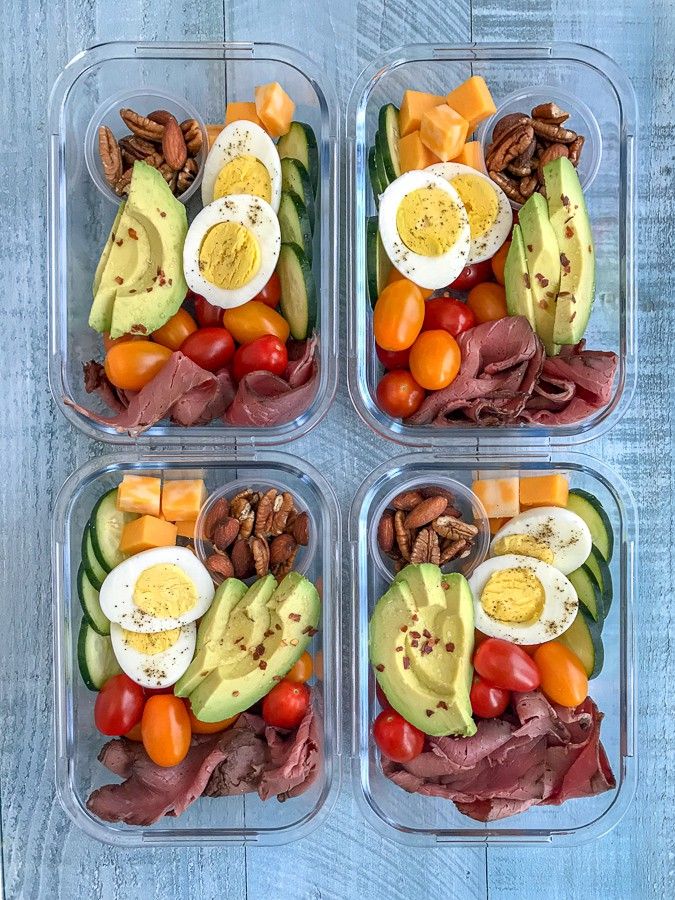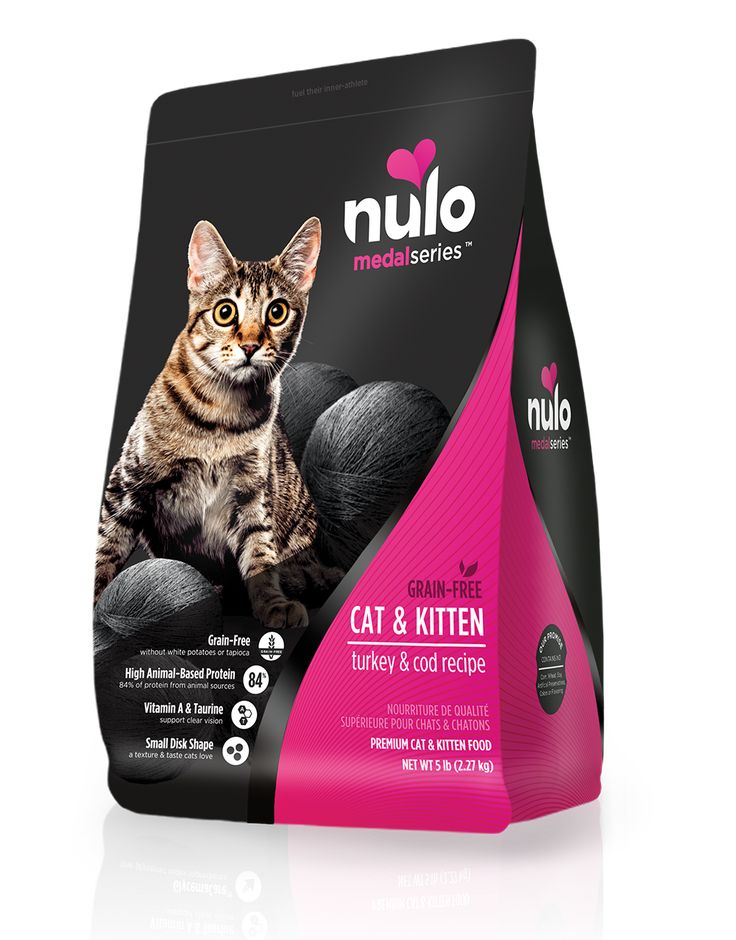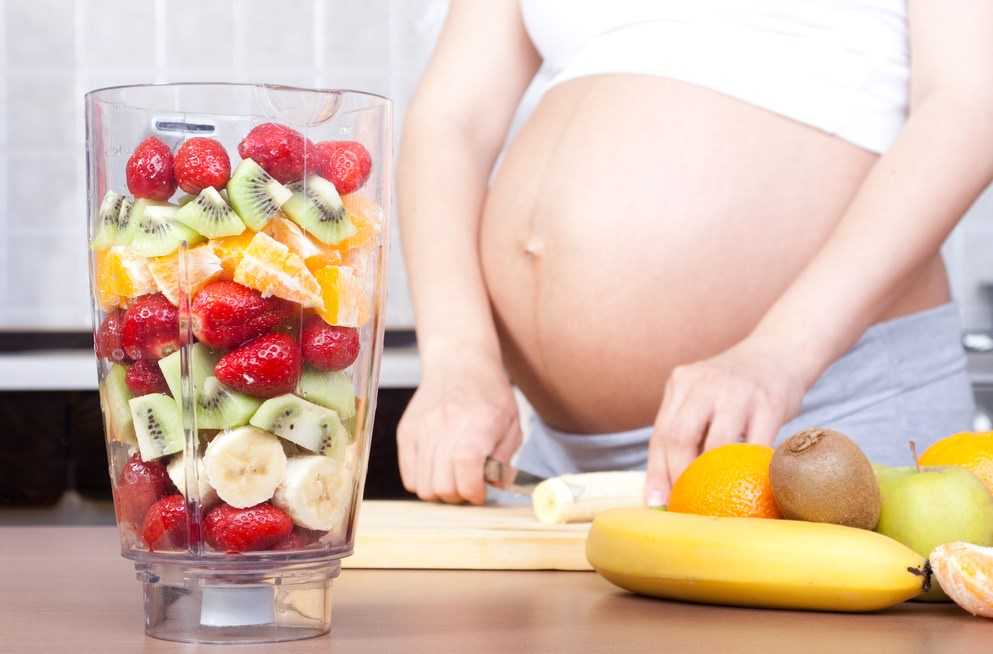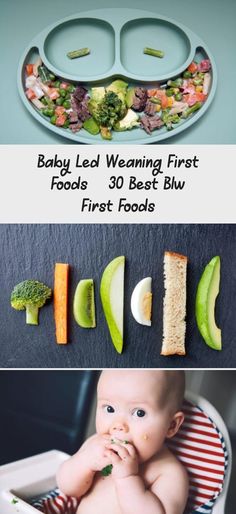Baby solid food gas
Baby unsettled at night since starting solids
·
Written by Marketa [email protected]
·
Written by Marketa [email protected]
On this Page:
- Scenarios and reasons why your baby is unsettled at night since starting solids
- When will my baby be ready for solids?
- Do solids help baby sleep through the night
- Some facts about milk and solids
- Important things to remember
Is your baby unsettled at night since starting solids? Or is your 6 month old gassy after starting solids? Are you concerned your baby is not sleeping enough, or your baby won’t sleep after introducing solids? This blog article aims to dispel some of the uncertainties around introducing solid foods and why your baby’s sleep pattern may be disturbed. Read on for more info!
Scenarios and reasons why your baby is unsettled at night since starting solids
First, let’s deal with the 4 scenarios you can expect your baby to follow when introducing solids:
- The ideal; your baby was sleeping well and continues to sleep well.
- An improvement; your baby was sleeping badly but now sleeps well.
- No change; your baby slept badly and continues to sleep badly.
- Your baby was sleeping well but now doesn’t.
If you fall into points 1 or 2 then great, you have no worries, but if you fall into points 3 or 4, it sucks. Hopefully, this article will help.
YOU MAY ALSO BE INTERESTED IN:
IS YOUR 1 YEAR OLD SLEEPING A LOT AND NOT EATING?
Now let’s deal with the
5 reasons why your baby is unsettled at night since starting solids:Timing
When you first start to introduce solids it’s important to remember that it’s to supplement breast milk or formula feeds and not to replace them. So make sure you always start with a milk feed. Wait a while and then introduce solids a small amount at a time. Try to make sure you are not feeding too close to nap or sleep time so your baby has time to digest the solid food.
So make sure you always start with a milk feed. Wait a while and then introduce solids a small amount at a time. Try to make sure you are not feeding too close to nap or sleep time so your baby has time to digest the solid food.
Think quality, not quantity
Your young baby should still be getting most vitamins and nutrients from milk. If you are feeding your baby too many solid foods and not enough milk, they may not be getting all the energy they need and will still be hungry. This will result in your baby sleeping badly and waking up for extra night feeds.
Distractions
Introducing solids usually happens between 4-6 months of age. This coincides with your baby’s increased curiosity about their surroundings. Your baby may become distracted during feed times and not take in as much milk as they should be doing. This has nothing to do with solid food but is part of natural development. It’s important to make sure your baby is taking enough milk, otherwise, they will wake for more night feeds. Try to regulate feeding times and be in a safe quiet place and try using tools that encourage efficient eating such as reusable food pouches and pouch spoons.
Try to regulate feeding times and be in a safe quiet place and try using tools that encourage efficient eating such as reusable food pouches and pouch spoons.
Tummy upsets
It’s quite normal for babies to have tummy upsets when they start solid foods. Your baby’s digestive system has to adapt to the change from an all-milk diet to one that includes solid foods. So, unfortunately, it may mean a few sleepless nights.
It may not be the food!
Is your baby unsettled after a night feed? This may be true, but baby sleep problems can be caused by many other things other than feeding. A change in routine, teething or simply being too hot or too cold can all result in your baby not sleeping. Or it may simply be caused by your baby’s stage of development.
When will my baby be ready for solids?
Starting your baby on solids is an exciting time and a developmental milestone. But it can be confusing for a new mum.
Experts recommend to start your baby on solids at around 4-6 months of age. So the signs to look out for that your baby is ready include:
So the signs to look out for that your baby is ready include:
- Your baby has good head & neck control,
- They can sit up on their own or in a baby chair,
- Your baby shows an interest in others’ food, such as watching what you eat and reaching for food,
- They open their mouth when presented with a spoon,
- Bub can pick things up between the thumb and forefinger.
However, you followed the signs and now you’ve noticed your 6 month old is gassy after starting solids. Or you’re worried about a baby stomach ache after starting solids. The above signs are a guide only. Gas or a baby stomach ache may be caused by starting solid foods before your baby’s digestive system is ready. Babies can suffer from gas because they have immature digestive systems and are swallowing air during feeds. If you are concerned about this, pause with the solids for a few days, or consult your doctor.
Click for more info about starting solids.
Click to shop solid feeding.
Do solids help baby sleep through the night
Some studies still say that giving your baby solids will help with sleep. The logic behind this theory is relatively simple: babies wake up when they are hungry, so starting solid food should help your baby sleep better (and longer) since their tummy is more full. Unfortunately, like most things involving a baby, the reality is not that simple. Although it is true that babies wake up when they are hungry, babies wake up for lots of other reasons, too.
What to feed a 6 month old baby at night?
Babies between 4 – 6 months are developmentally able to sleep through the night without a feed. However, this doesn’t always happen. Breast milk or formula is still your baby’s primary source of nourishment, but if you are wondering what to feed a 6 months old baby at night the following list is useful:
- Oatmeal or porridge – is an extremely healthy meal for both babies and adults.
 Oatmeal is an excellent source of melatonin which helps trigger insulin production, which in turn helps to induce sleep!
Oatmeal is an excellent source of melatonin which helps trigger insulin production, which in turn helps to induce sleep! - White rice – several scientific studies have found that rice helps people sleep better and faster. Try making a simple rice pudding to feed your baby before putting them down to sleep.
- Bananas – bananas are loved by both mums and babies for their soft texture and sweet taste. But did you know that they contain a good amount of magnesium which is a natural muscle relaxant? Relaxed muscles mean your baby should feel sleepier after dinner and should help them sleep better.
- Dairy products – for adults and children alike, a warm milky bed time drink helps everyone to sleep better. But did you know other dairy products like yogurt and cheese can help your little one feel sleepy? Dairy contains essential amino acids that help with a better nights sleep.
Some facts about milk and solids
- Milk is still the most important food for a baby up until they’re 8-12 months old, so you should always offer a milk feed before solids until they reach this age.
 In the beginning, solid food works like a top-up for your baby, rather than replacing actual milk feeds.
In the beginning, solid food works like a top-up for your baby, rather than replacing actual milk feeds. - After 8 months, you can start to offer solids before milk feeds and gradually start to replace some of the milk feeds during the day (eg, lunch).
- Babies need a combination of protein and iron in their diet from 6 months onward. This helps them feel full enough to sleep well at their lunchtime nap and also overnight. Breast milk contains very little to no iron, but babies are born with enough iron stores to last their first 6 months or until you start introducing solids.
- Only give protein to babies under 10 months at lunchtime, so they have enough time for it to digest. Protein given at dinner to a baby younger than 10 months can cause baby sleep problems as their fragile digestive system will struggle to cope.
Important things to remember
Starting solids will not be the miracle cure for a good nights sleep. It will take time for your baby to adapt to solids and to be taking enough for them to be ‘full’. Introduce new foods slowly and allow a few days in between to check for any allergic reactions.
Introduce new foods slowly and allow a few days in between to check for any allergic reactions.
Introducing solids can cause tummy upsets which may result in your baby not sleeping enough. Keep an eye on your baby’s nappy, how often they need changing and the colour and texture of the poop. If you are concerned about your baby’s bowel movements always consult a health care worker.
References
The Baby Center 2018, Why is my baby sleeping worse now he’s started solids?, Baby Center, viewed at 02 Jan 2020, URL
Glow Dreaming, 2019 Introducing Solids: How it can affect your babies sleep, Glow Dreaming, viewed at 01 Jan 2020, URL
Baker, N 2019, SOLIDS! The when, what, how of solid food.The Little Ones, viewed at 05 Jan 2020, URL
Tagged in
- Starting solids
Continue reading
Food Blender vs Food Processor
How To Warm A Baby Bottle Safely
Do I really need a baby food maker and processor?
Introducing Your Baby To Solid Food
Your little one is growing up fast! Can you believe how far you’ve both come? Your baby has made leaps and bounds in their development, and the time for them to graduate to solid foods may be fast approaching. If you're wondering when to start solid food, how you go about introducing solid foods, and what baby foods you should avoid, read on. We’re delving into solid foods for baby to help make your infant’s introduction to their first foods a success—and help set them up for a life of healthy eating!
If you're wondering when to start solid food, how you go about introducing solid foods, and what baby foods you should avoid, read on. We’re delving into solid foods for baby to help make your infant’s introduction to their first foods a success—and help set them up for a life of healthy eating!
When To Start Solid Foods
As we know, every child is different. While the American Academy of Pediatrics recommends introducing solid food at around six months old, there are a few other developmental milestones they should hit in order for your baby to be ready for solid foods.
They should be able to sit upright with support and hold their head up in a steady manner. If they’re putting their fingers, hands, or toys in their mouth, or showing an interest in your food, they may also be ready for baby food. Around this age is also when your little one starts to learn to move food to the back of their mouth to swallow, rather than pushing it out of their mouth with their tongue. If you think they’re in a good place to introduce food, confirm your hunch with your pediatrician before dabbling in mashed or pureed food.
If you think they’re in a good place to introduce food, confirm your hunch with your pediatrician before dabbling in mashed or pureed food.
Also, be sure to avoid well-intended advice from family and friends if they mention introducing solid food before six months old. There’s a fairly common myth that solid foods will help calm a fussy baby, which leads many people to start introducing solids too early, at three or four months of age. This is not only misguided, it’s been associated with infants becoming overweight or obese during both their babyhood and childhood. So, resist the urge to pick up the baby spoon too soon.
What Are Good Feeding Habits?
Establishing good eating habits from the get-go is key to setting your child up for eating well throughout their life. These include sitting up while eating, getting food from utensils, taking a break between bites, and knowing to stop eating when they’re full. The following tips below can help make mealtime more manageable and enjoyable too.
Have family mealtime: From the time you first introduce solid foods into the mix, encourage the whole family to dine together. Research has shown that regular family meals can positively affect the development of children.
Spoon out individual servings: Instead of feeding your infant from the jar or a container of baby food, portion out small servings in a dish. That way, their saliva-covered spoon won’t contaminate the rest of the food. You can safely refrigerate open jars or containers of baby food for two to three days.
Encourage exploration: Playing with their food is one way in which your baby learns about the world around them, so there’s no need to discourage them at this age. Just be sure the food you’re providing is soft and easy to swallow.
Introduce utensils: Get your little one used to holding utensils by giving them a spoon to hold, while you feed them with another spoon. This will help improve their dexterity.![]() Then, eventually you can encourage them to feed themself with the spoon.
Then, eventually you can encourage them to feed themself with the spoon.
Use a cup: Give your baby breastmilk or formula from a cup. This will get them used to the feeling of having the rim on their lips, and by about nine months, they should be able to use a sippy cup all on their own.
Don’t force-feed: Your infant may turn away from their food or cry when they’ve had enough. As long as they’re growing as they should, they’re likely getting enough nutrients. Also, some may think that feeding your baby as much as possible before bedtime can help them sleep, but there’s no evidence that it helps anything. If your infant is being fussy, there are ways to calm them down.
How To Introduce Solid Foods
By now, you might be wondering what foods you should start introducing to your baby and how to go about doing so. Below is an easy-to-follow guide.
Start with the basics: The first solid food that you offer your growing infant should be pretty basic, made up of only a single ingredient, with no added sugar or salt.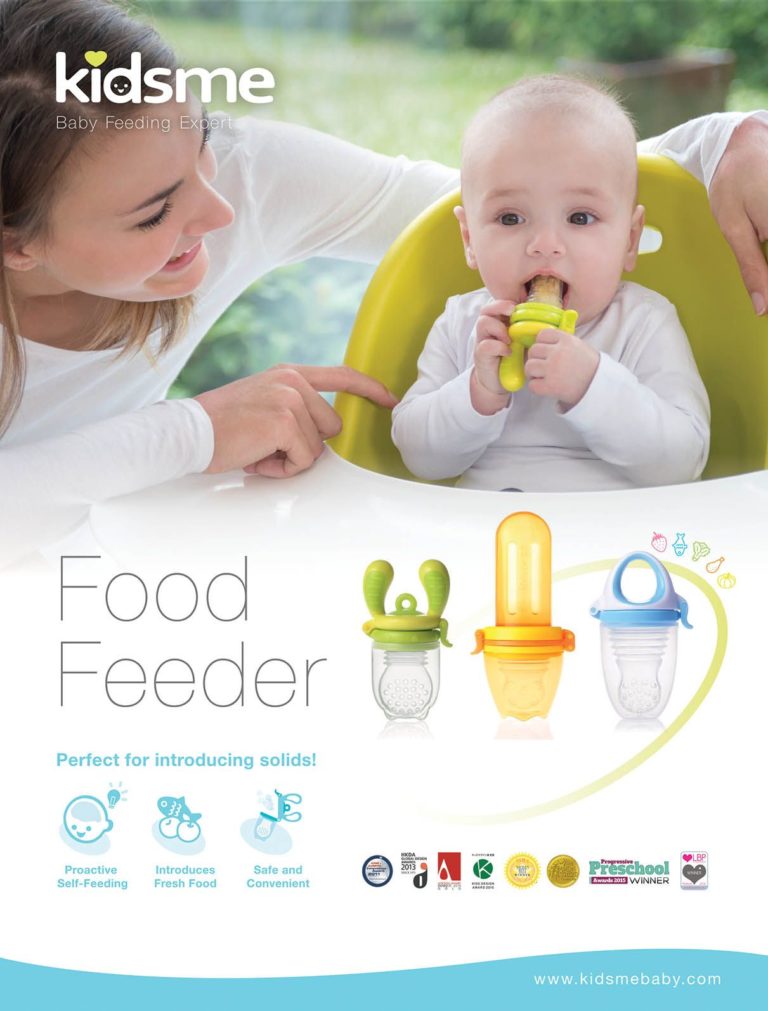 These include pureed foods like banana, sweet potato, apple, or pear, for example. You can buy them pre-packaged, or make them yourself at home with a blender.
These include pureed foods like banana, sweet potato, apple, or pear, for example. You can buy them pre-packaged, or make them yourself at home with a blender.
Proceed gradually: Only introduce one ingredient at a time to be sure your baby doesn’t have a negative reaction to it, such as diarrhea, vomiting, or a rash. Give it three to five days before you introduce another single-ingredient food. Once you’re confident that your little one won’t have a reaction to certain ingredients, then you can combine them at feedings.
Incorporate key nutrients: Nutrients, particularly zinc and iron, are especially important for your baby’s development from six months to 12 months old. You can find zinc and iron, along with other nourishment, in pureed meats and single-grain, iron-fortified baby cereal.
Slowly increase food’s consistency: Speaking of baby cereal, start out by mixing it with four tablespoons of breastmilk or formula, giving your baby one to two teaspoons of it at a time. Then, gradually decrease the amount of liquid in it and increase the overall serving size as your infant gets used to swallowing it.
Then, gradually decrease the amount of liquid in it and increase the overall serving size as your infant gets used to swallowing it.
Say hello to finger foods: When your baby has gotten the basics down with mashed or pureed foods, as long as they can sit up and bring their hands or other objects to their mouth, you can introduce them to finger foods and the concept of self-feeding. Just make sure any finger foods you give them are soft, easy to swallow, and cut into small pieces. These could include morsels of banana, baby puffs, dry cereal, cheese, scrambled eggs, peas, and well-cooked pasta, chopped chicken, and potatoes. By a few months into the solid food game, your little one’s diet should be filled with variety.
Don’t avoid potential allergens: Previously, there had been a school of thought that potential allergens shouldn’t be introduced to babies until they’re older children to lessen their likelihood of developing allergies to them.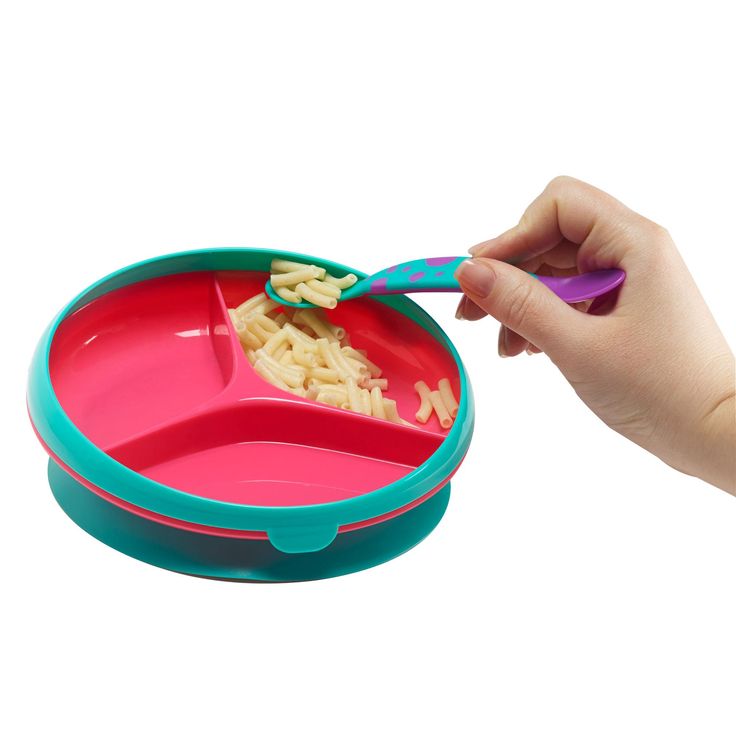 However, there is no evidence to back that theory up. In fact, introducing potential allergens early, around six months old, could help prevent your infant from developing an allergy. So, go ahead and offer your child soft, small portions of eggs, dairy, soy, peanut products, and fish.
However, there is no evidence to back that theory up. In fact, introducing potential allergens early, around six months old, could help prevent your infant from developing an allergy. So, go ahead and offer your child soft, small portions of eggs, dairy, soy, peanut products, and fish.
Although we should note a couple of exceptions: If your infant has eczema or other food allergies or risk factors, it’s best to have your pediatrician evaluate them prior to introducing a potential allergen.
Be prepared for gassy bouts: Your baby’s digestive system is still in development, which means they can be gassy, especially when new foods are introduced. Be prepared for these moments and have Infants’ Mylicon Gas Relief Drops in dye-free or our original formula. They work quickly to help break gas bubbles down to help your little one naturally expel them. And, no worries, the medicine won’t get absorbed into your baby’s system; it will simply pass right on through to their diaper. Plus, it’s safe to give after every feeding—even for newborns—up to 12 times a day.
Plus, it’s safe to give after every feeding—even for newborns—up to 12 times a day.
Promote healthy digestion: You can also help your infant’s fledgling digestive system along by giving them Infants’ Mylicon Daily Probiotics every day. They replenish the “good” bacteria in your baby’s tummy and help support healthy digestion, as well as their immune system. Bonus: When given daily, over time our probiotics can help reduce crying and fussiness associated with colic by 50% or more!
How To Prepare Solid Foods For Your Baby
As we covered, it’s pretty easy to throw a single fruit or veggie, or combination of them, into a blender at home. But, it’s interesting to point out that some parents choose to skip pureed foods altogether and wait to introduce solid foods until their babies are ready to feed themselves soft finger foods. Although there hasn’t been much formal research around this method, it may help give your infant a sense of control over their mealtime—plus, they’ll be able to have little bits of some of what the rest of the family is eating.
This method may also help develop your little one’s dexterity and hand-eye coordination, as well as foster decision-making. It may help them recognize when they're hungry or full, as well as open up the number of different food tastes and textures to try.
Keep in mind, however, that this approach isn’t a one-size-fits-all. If your infant was premature, has trouble gaining weight, or has any developmental delays, it may not be the way to go. There’s no steadfast right or wrong way to start introducing solids, so, as always, talk to your pediatrician about any changes you're making to your baby’s diet and the dos and don’ts to follow. Just take it slow and follow your doctor’s advice.
What Foods Should You Avoid For Babies?
Just like us, babies benefit from a diet that’s varied, but there are some general things you should avoid.
Hold the juice: You may be excited to share new tastes with your little one, but hold off on giving them juice until they’re at least one-year old. It isn’t a necessary part of their diet, and giving them the real thing such as diced fruit is much more valuable to them nutritionally. Juice can also contribute to weight problems and diarrhea, as well as tooth decay.
It isn’t a necessary part of their diet, and giving them the real thing such as diced fruit is much more valuable to them nutritionally. Juice can also contribute to weight problems and diarrhea, as well as tooth decay.
That said, if you just can’t help yourself, the American Academy of Pediatrics advises waiting until your baby is at least 12 months old and younger than three years, and giving no more than four ounces of 100% fruit juice a day.
. . . and the water: As long as your baby is healthy, you shouldn’t have to supplement their diet with water. Both breastmilk and formula provide an adequate amount of fluids. If you want to give your infant a little water to, say, help those solid foods go down or if it’s a hot day, hold off until they’re at least six months old, and give them no more than one cup (eight ounces) a day.
Delay introduction of cow’s milk: Milk from a cow doesn’t meet any of your baby’s nutritional needs. It’s also not a great source of iron, and giving it to your child before the age of one may increase the risk of them developing an iron deficiency.
Ditto with honey: You should also hold off on introducing them to honey until they’re older than 12 months. Honey may contain spores, which can be toxic to an infant.
Be aware of culinary choking hazards: There are some foods that increase your baby’s risk of choking. So, be sure to avoid quick grabs such as hotdogs, including baby food “hot dogs” and meat sticks, chunks of meat, cheese, fruits, or veggies, whole grapes (slice them up, instead!), nuts, seeds, and raw veggies; cook the latter to soften them.
What To Do If Baby Is Not Eating Solids
First off, take a deep breath. There’s usually no reason to worry if you’re having trouble trying to get your infant to transition to solid foods. The tastes and textures are new to them, so there can be an adjustment period. It’s quite normal for an infant to refuse solid foods at first, or just suck or gnaw at them (which is how they learn). And you may have to be more persistent than you think.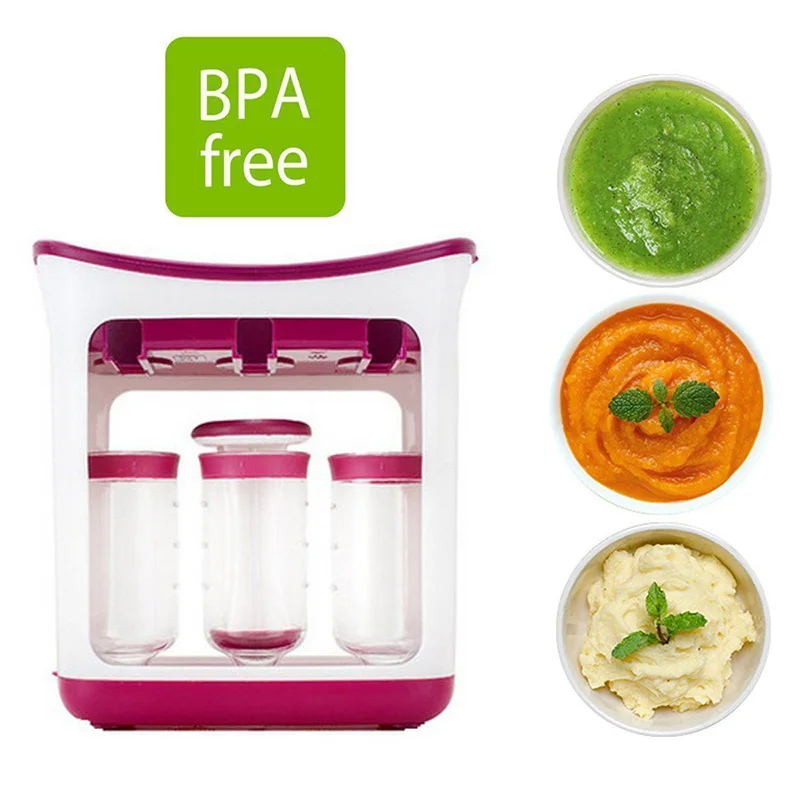
Sometimes, it can take 10 to 15 attempts with the same food over a period of months for your baby to accept a new food. Try not to get discouraged, and space out when you offer said food by about a week.
Let your little one see you, and even other members of the family, indulge in the food you're having a difficult time getting them to accept. They’re more likely to try it if they see you and their peers enjoying it. If their resistance to solid food persists for too long, or if you feel they’re being too indulgent, however, it may be time to speak to your pediatrician.
Lastly, if your precious little one is still finicky as they enter toddlerhood, learn 12 Tips For Picky Eaters.
Next: New foods are a huge step for your baby, but with them, gassy bouts may follow as their little systems adjust. We’ve got you. Learn How To Relieve Infant Gas.
Baby soap Recipes of purity - rating 5 according to expert reviews ☑ Examination of the composition and manufacturer
When evaluating products, we use only expert reviews, which are based on laboratory tests. We do not collect user reviews as they are easy to manipulate. However, you can leave feedback about our study.
We do not collect user reviews as they are easy to manipulate. However, you can leave feedback about our study.
Solid toilet soap for children under the Recipes of Purity trademark is produced by JSC Nizhny Novgorod Oil and Fat Plant in Russia. The sample was purchased at CJSC Trading House Perekrestok (Karusel hypermarket) at the address: 8a Andropova Ave., Moscow. requirements of the legislation, but also the advanced standard of Roskachestvo. Heavy metals were not found in the sample: lead, arsenic and mercury. An hour after application, no active staphylococcus bacteria were found on the soap, that is, this sample is an unfavorable environment for the growth of bacteria. The net weight of a bar of soap corresponds to the nominal weight indicated on the label.
Qualitative number (weight of fatty acids in terms of the weight of a piece of 100 g) determines the washing power of the soap. The quality number of this sample meets the requirements of GOST. In addition, the soap lathers well.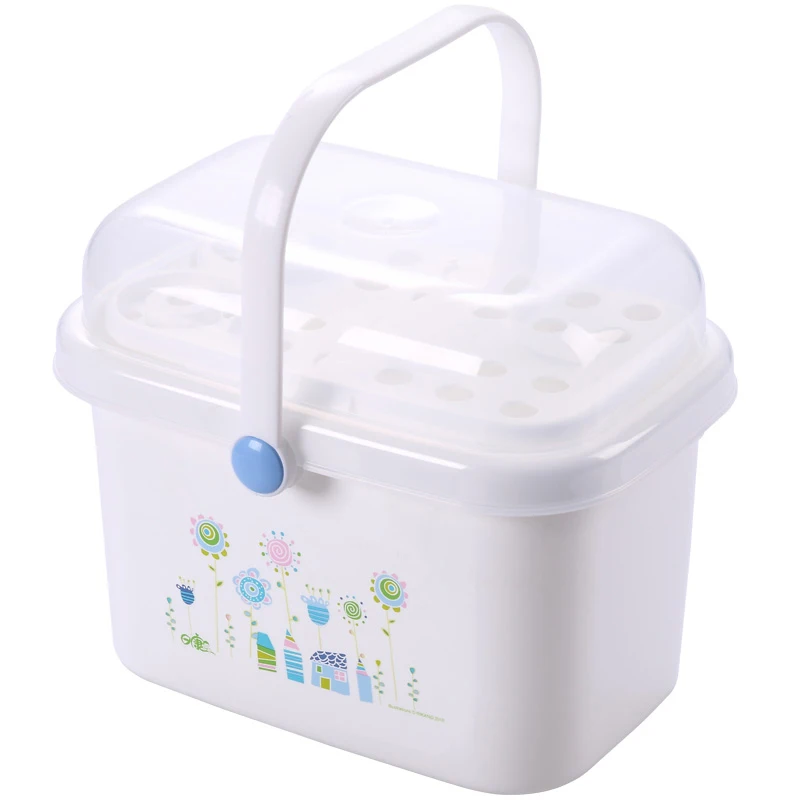 This means that this sample has good detergent properties. The mass fraction of sodium chloride complies with the requirements of GOST.
This means that this sample has good detergent properties. The mass fraction of sodium chloride complies with the requirements of GOST.
According to the results of the technical audit of the enterprise, including the determination of the level of localization, this product confirmed its high quality and was awarded the Russian Quality Mark.
-
Manufacturer
JSC "RosBytKhim"
-
Manufacturer
JSC "Nizhny Novgorod oil and fat plant"
-
Composition
Sodium Palmate, Sodium Tallowate, Sodium Palm Kernelate/Sodium Cocoate, Aqua, Glycerin, Cream (Aqua, Glycine Soja (Soybean) Oil, Potassium Cetyl Phosphate, Stearic Acid, Parrafinum Liquidum, Glyceryl Stearate, Glycerin, Lanolin, Citric Acid, Methylchloroisothiazolinone , Methylisothiazolinone), Titanium Dioxide, Tetrasodium EDTA/Disodium EDTA, Sodium Chloride.

-
Weight
200g
-
Year of manufacture
17
-
Barcode
4600528340556
- Protocol
- Act
- Act
- Protocol
- Protocol
- Protocol
- Protocol
- Protocol
- Protocol
- Protocol
causes, treatment, symptoms, remedy for bloating at home
What is bloating
Bloating or flatulence is a syndrome caused by the accumulation of excess gas in the gastrointestinal tract.
Bloating can occur both with excessive formation of gases in the digestive organs, and with insufficient removal of them. Gas retention often worries in the afternoon, when the digestive system is functioning as actively as possible. Discomfort can go away after going to the toilet, but sometimes even the act of defecation does not save - the gas continues to accumulate and periodically exit through the anus with various unpleasant odors and a loud sound.
Flatulence is not a single disease, it presents with a variety of symptoms and can be influenced by many factors.
Periodic bloating is familiar to absolutely everyone, it is usually associated with a meal that causes increased gas formation, and passes quickly enough. But constant discomfort and pain in the abdomen indicate the presence of pathology. Very often, bloating is associated with a significant accumulation of feces in the large intestine, excess fat in the abdomen, fluid retention in the body. The effectiveness of further treatment depends on the correct determination of the causes of swelling.
Causes of bloating
The human intestine produces gases every day, but most of them, about 70%, we absorb with air during meals. Every time we swallow food, 2-3 ml of air enters the stomach with it.
Normally, about 200 ml of gas is constantly present in the intestines of a healthy adult, and the total circulation per day is 20 liters or more. Through the rectum during the same time, from 200 ml to 2 liters of gas is released.
There is already a certain amount of carbon dioxide in the stomach, a product released during the reaction of hydrochloric acid with alkaline foods. In the duodenum, carbon dioxide is also formed during the reaction of the components of pancreatic juice with hydrochloric acid coming from the stomach.
Gases in the intestines come from several sources:
- gas released during the fermentation and putrefaction of food;
- metabolic products of bacteria resulting from fermentation;
- gas coming from the circulatory system.

The air taken in with food combines with the gases in the digestive organs, forming foam from small bubbles. These vesicles are covered with slippery mucus, which allows the gas to move freely towards the anus during peristalsis.
Organic matter not absorbed in the small intestine enters the large intestine. Their composition determines the smell of the gas. The unpleasant smell of gases and feces is associated with the formation of hydrogen sulfide and ammonia during the breakdown of proteins. If the products of protein metabolism predominate over other components, the smell of rotting products appears. Vegetable fibers, fiber and complex carbohydrates form a large volume of gas, which is dominated by odorless carbon dioxide.
The composition of gas and its quantity in various segments of the digestive system are determined by the balance between the processes of formation and excretion. Bloating occurs when there is more gas in the intestines than the body can expel.
Causes of physiological bloating
All causes of bloating are divided into two large groups: periodic functional disorders that occur in healthy people under the influence of certain factors, and manifestations of various diseases of the digestive system. Among the common causes of bloating, not associated with systemic diseases:
- Wrong eating behavior. Lack of diet, too much food eaten at one time, overeating at night, sedentary lifestyle, constant snacking on harmful foods.
- Switching to unfamiliar foods, for example when traveling to a country with specific culinary traditions. Bloating can also occur when switching to an unbalanced diet in order to lose weight. The cause of the painful condition is the lack of pancreatic enzymes necessary for the digestion of unfamiliar foods.
- Frequent use of foods that stimulate excessive gas formation, such as kvass and black bread, which start the fermentation process when they enter the intestines.

- Air travel. The so-called high-altitude flatulence is associated with the expansion of gases and an increase in their pressure on the digestive organs due to a decrease in atmospheric pressure at high altitude.
- Hormonal changes during the menstrual cycle and during pregnancy.
All these causes do not imply pathologies of the internal organs. They are periodic and disappear after the elimination of the factors that caused discomfort.
Flatulence is common in old age due to inevitable changes in intestinal physiology. Over time, atrophy of the muscular wall of the intestine and a decrease in the functionality of the digestive juices occur. As a result, gases and undigested products are retained in the intestinal lumen, causing flatulence.
Swallowing air
Flatulence caused by swallowing excess air while eating is called aerophagia.
The air swallowed while eating and drinking makes up more than half of the composition of intestinal gas. Air swallowing is associated with:
Air swallowing is associated with:
- fast food on the go,
- talking while eating,
- insufficient chewing and swallowing of large pieces,
- smoking while eating,
- drinking carbonated drinks,
- drinking drinks through a straw.
A large amount of air enters the stomach with constant chewing of chewing gum.
After eating in a hurry, part of the swallowed air comes out with eructation, but the other part enters the gastrointestinal tract.
Another cause of aerophagia is ill-fitting dentures. A lot of air enters the stomach and with increased salivation that occurs with neurosis and stress or as a result of certain diseases of the digestive system, for example, pancreatitis or stomach ulcers.
Diseases that cause bloating and gas
Almost all acute or chronic diseases of the digestive system can cause bloating, as they disrupt the processes of digestion and absorption of food and impair intestinal motility.
Most often flatulence is one of the symptoms:
- inflammation in colitis, gastritis, enteritis;
- irritable bowel syndrome;
- inflammation of the pancreas - pancreatitis;
- inflammation of the gallbladder and biliary tract - cholecystitis;
- tumors of the stomach and intestines of any etiology, adhesions, the presence of intestinal parasites (worms), etc.;
- acute appendicitis;
- poisoning that caused intestinal motility disorders;
- lactose intolerance;
- gluten intolerance - a group of proteins found in cereals;
- neuroses and other diseases of the central nervous system.
Abdominal enlargement is not always associated with excess gas in the intestines. A large belly also appears with obesity. A person may feel quite satisfactory, but we must not forget that excess fat in the abdomen disrupts the rate of metabolic processes and is a risk factor for the development of hypertension, diabetes and other serious pathologies.
Bloating almost always accompanies another functional disorder of the digestive system - irritable bowel syndrome. With this pathology, gastrointestinal diseases are not detected, and intestinal motility is impaired due to problems of a nervous or humoral nature.
The main symptom of irritable bowel is frequent abdominal pain and stool disturbances. The stool can be either liquid or too hard, causing constipation. Flatulence accompanies both forms of the disorder. Gas in irritable bowel syndrome is formed due to a change in the intestinal microflora and slowing of motility due to problems with reflex regulation.
Deficiency of digestive enzymes may occur due to inflammation of the pancreas. As a result, not a fermented lump, but unprocessed food enters the large intestine. Under the action of colon bacteria, food begins to decompose and ferment, forming a significant amount of gas.
A disease that is not related to the gastrointestinal tract, but causes bloating - ascites. This pathology is characterized by the accumulation of a large amount of fluid in the abdominal cavity. Ascites can be a symptom of severe infection, cirrhosis of the liver, heart and vascular problems, and portal vein thrombosis. This condition requires immediate medical attention.
This pathology is characterized by the accumulation of a large amount of fluid in the abdominal cavity. Ascites can be a symptom of severe infection, cirrhosis of the liver, heart and vascular problems, and portal vein thrombosis. This condition requires immediate medical attention.
Flatulence can also be an indirect sign of uterine fibroids, fibroids and ectopic pregnancy. Increasing in size, the uterus begins to squeeze the rectum, preventing the normal release of gases.
Lactose intolerance
Lactase deficiency is another common cause of bloating. The essence of the pathology lies in the absence or insufficient activity of the lactase enzyme, whose task is the breakdown of lactose (milk sugar) into glucose and galactose. Milk sugar, unlike glucose and galactose, does not have the ability to be absorbed into the bloodstream and enters the large intestine unchanged. There, bacteria are involved in its splitting, and its utilization takes place with the release of a large volume of gas.
This process is based on the test for the determination of lactase deficiency using the analysis of exhaled air. The pathology is indicated by a high concentration of hydrogen in it. Another symptom of the disease is liquid stools with foam and a characteristic sour smell due to increased secretion of water under the influence of undigested lactose.
Lactase deficiency is manifested only when whole milk is consumed. In kefir, curdled milk and other fermented milk products, milk sugar is much less, and in cheese and cottage cheese it is completely absent.
Representatives of some peoples at the genetic level do not tolerate milk sugar, for example, the adult population of Africa. The lactose tolerance gene has not been formed among peoples who have long been engaged in crop production, and not agriculture - the Japanese, the Chinese and some other representatives of Asian countries.
Lactase deficiency is sometimes diagnosed in weak premature babies, but these cases are quite rare. Before transferring a newborn to lactose-free mixtures, a thorough examination is necessary. The situation becomes much more dangerous if the baby has an intolerance to casein, the main milk protein that is found in absolutely all dairy products, including cheese, cottage cheese and all fermented milk products. In this case, the child can be fed only with vegetable milk (Fig. 1), for example, soy milk, and introduce vegetable complementary foods and gluten-free cereals.
Before transferring a newborn to lactose-free mixtures, a thorough examination is necessary. The situation becomes much more dangerous if the baby has an intolerance to casein, the main milk protein that is found in absolutely all dairy products, including cheese, cottage cheese and all fermented milk products. In this case, the child can be fed only with vegetable milk (Fig. 1), for example, soy milk, and introduce vegetable complementary foods and gluten-free cereals.
Every third pregnant woman has bloating in the second or third trimester. Increased gas formation is accompanied by frequent belching, heartburn and problems with the stool. This may be due to the following factors:
- enlargement of the uterus and its pressure on the intestines;
- slowing peristalsis due to hormonal changes;
- increased load on the liver and pancreas and insufficient production of digestive enzymes.

What foods cause bloating in adults
Flatulence provokes a large number of foods, this list is largely individual. Some do not tolerate exotic fruits and unfamiliar cuisine, while others have bloating from traditional products for our latitudes or their combinations. But most provocative products are well known (Fig. 2), they are present in every group:
- Bread and pastries. Gas formation begins after the use of yeast dough products, since yeast is a fungus that causes the fermentation process. Especially actively provokes flatulence fresh white bread and muffins. Black bread also begins to actively ferment under the influence of gastric juice, which is why it is used in the production of kvass.
- Milk - causes bloating, but fermented milk products, on the contrary, normalize the balance of intestinal microflora.
- Vegetables are the largest group of foods that cause bloating. Fermentation in the intestines is caused by all types of cabbage, especially white cabbage; legumes, especially beans and peas, remain undigested in the intestines for a long time and cause the rapid multiplication of bacteria; fresh herbs, cucumbers, all kinds of radishes, tomatoes, potatoes.

- Fruit. Gas formation when eating fruits is associated with a high content of sugar in them, which stimulates the fermentation process. Especially active process causes grapes, pears, peaches and other juicy sweet fruits.
Other products worth noting are eggs, pork and lamb, mushrooms. Bloating causes a large amount of slowly digested protein and coarse plant fibers. Active fermentation is also provoked by fast carbohydrates.
To prevent your favorite foods from causing flatulence, you can change the cooking method. For example, stewed cabbage does not stimulate gas formation. Cucumbers can be poured with vegetable oil, and legumes can be pre-soaked in water for several hours.
Flatulence can also be caused by neutral foods, if consumed constantly. For example, rice and fish do not activate fermentation, but if you eat only sushi and rolls, then constipation will begin very quickly, and with them the process of decay with increased gas emission.
Who most often has bloating
Despite the fact that bloating in itself is not a disease and can periodically appear in perfectly healthy people, there are risk groups in which this condition appears very often:
- Overweight people - excess body weight increases the load on all body systems, including the digestive organs. In addition, excess weight usually appears in people with improper eating behavior, who prefer fatty and sugary foods in excessive quantities.
- Smokers. Swallowing air occurs not only when smoking regular cigarettes, but also when using electronic gadgets and hookahs.
- Pregnant women due to an increase in the size of the uterus.
- People with chronic diseases of the digestive system, even in remission.
- People suffering from chronic bronchitis and lung diseases. Problems with the bronchi and lungs can also provoke flatulence, since shortness of breath is one of the reasons for swallowing air while eating.

20-30% of people suffer from bloating from time to time. This is a very common syndrome.
Where bloating occurs
Bloating occurs in different parts of the digestive tract.
In the stomach
The stomach always contains a certain amount of air that enters it during meals. The natural mechanism for getting rid of excess air is belching, the remaining volume enters the small intestine.
The stomach contains mainly nitrogen and oxygen, gases contained in the atmosphere and odorless. An unpleasant odor occurs when gases pass through the small and large intestines.
In the small intestine
In the small intestine, gas bubbles combine with liquid digested food and are absorbed through its mucous membrane.
In the duodenum (the first section of the small intestine), hydrochloric acid reacts with alkali to produce carbon dioxide. In the normal state, most of the carbon dioxide is absorbed into the blood, and the rest passes further into the large intestine.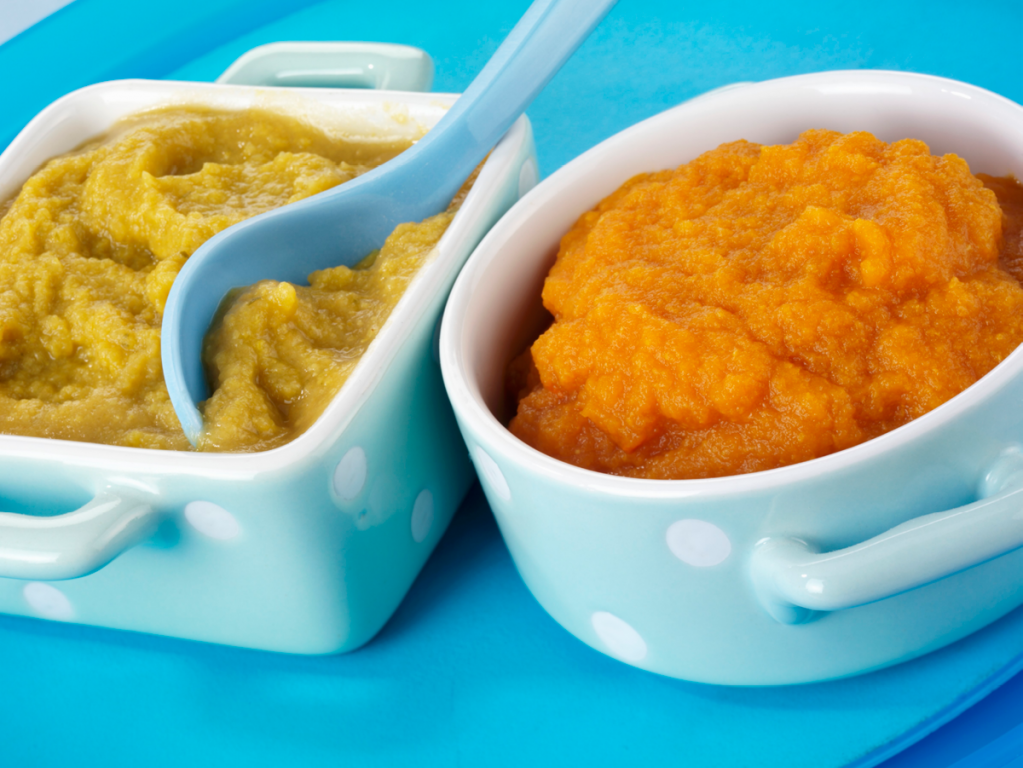 With excess production of carbon dioxide, it lingers in the small intestine, causing bloating.
With excess production of carbon dioxide, it lingers in the small intestine, causing bloating.
In the large intestine
In the large intestine, stool accumulates and gases are not absorbed into the blood. They can only come out through the rectum. Depending on the amount of gas accumulated in the colon, it comes out at different rates.
Gases affect the functioning of the large intestine in different ways. So, an excessive amount of methane in the composition of the gas leads to constipation, because methane makes it difficult for the movement of feces through the rectum. An increased concentration of hydrogen negatively affects motility, but activates movement in the lower sections of the colon.
In case of digestive problems and ingestion of undigested food into the large intestine, indole and skatole compounds are formed. Combining with hydrogen sulfide, they acquire a sharp unpleasant odor.
Symptoms of bloating
Excess gas in the digestive system is manifested by general discomfort and some unpleasant symptoms:
- pain and heaviness in different parts of the abdomen or throughout its entire area;
- loud sounds in the abdomen, feeling of constant movement in it;
- off-gassing with an unpleasant odor accompanied by loud noises.

Sometimes there are complaints of frequent belching with an unpleasant aftertaste, heartburn, indigestion, sleep problems, emotional instability.
Subjective sensations depend on the specific part of the digestive tract where gases accumulate. If the delay occurs in the region of the splenic flexure, then complaints are associated with pain in the left hypochondrium, radiating to the heart, and general bloating. The accumulation in the area under the liver is manifested by pain in the right hypochondrium and a feeling of fullness in the stomach.
Flatulence of the small intestine is characterized by a general swelling of the abdomen, and of the large intestine - on the sides.
How to deal with bloating
Bloating can be alleviated by taking certain medications, but taking them without consulting a doctor, relying only on advertising, is very dangerous. With pain in the abdomen, you can drink antispasmodics, but it is best to give up junk food for a while and lie down calmly.
When should I go to the doctor?
Consult physician if bloating is accompanied by any of the following symptoms:
- severe or prolonged abdominal pain;
- blood in stools or dark, tarry stools;
- high temperature;
- diarrhea;
- exacerbation of heartburn;
- vomiting;
- asymmetric enlargement of the abdomen;
- unexplained weight loss.
If the condition is not acute and does not allow you to leave the house, you should call an ambulance. Bloating can be a sign of acute appendicitis or intestinal obstruction, these conditions require urgent medical attention.
Why there is constant bloating
If abdominal discomfort persists for a long time, then this is a serious reason to visit a general practitioner and a gastroenterologist. Constant bloating is an alarming symptom, indicating the presence of a pathology of the digestive system. Of particular concern should be the fact of malaise against the background of the normalization of nutrition and the rejection of bad eating habits.
In diseases of the digestive system, bloating is accompanied by a complex of other symptoms: severe pain, weakness, nausea, heartburn, diarrhea or constipation.
Treatment for bloating
There is no single treatment regimen for bloating, as it depends on why the condition occurs.
If bloating bothers you very often, you should consult a gastroenterologist and undergo a comprehensive examination. Treatment is determined by the presence of the underlying disease.
Medicines for bloating and bloating
Any medications are taken only in consultation with a gastroenterologist.
The complex of treatment includes:
- defoamers - to destroy gas bubbles and facilitate the release of gas to the outside;
- activated charcoal and other enterosorbents for collecting toxic bacterial waste;
- prokinetics - to stimulate peristalsis;
- preparations with enzymes to improve digestion;
- probiotics - live bacteria to normalize the microflora;
- antispasmodics - to relieve pain.

For constipation, laxatives are taken, but we should not forget that the frequent use of such drugs adversely affects the motor function of the intestine.
Diet
It is impossible to talk about any special diet for bloating, because this condition is not a disease. But if the seizures bother you regularly, then you should follow some recommendations for organizing nutrition:
- you need to eat several times a day in small portions, avoid overeating;
- last meal - not less than 4 hours before bedtime;
- limit indigestible foods in the diet - legumes, cabbage, sweet fruits;
- do not drink carbonated drinks, including beer;
- gradually introduce foods rich in fiber into the diet;
- consume fermented milk products, they contain bacteria useful for the stomach - probiotics;
- exclude fried foods;
- increase the amount of protein in the diet.
The transition to a proper balanced diet normalizes the functioning of the digestive system and helps to avoid attacks of flatulence.
Home remedies for bloating
Traditional medicine offers many prescriptions for relief from bloating, but they must be used with caution. Any plant is a potential allergen, and non-observance of proportions can lead to sad consequences. Before using alternative medicine, you should consult your doctor.
Among the folk remedies with a carminative effect are:
- fennel infusion - 2.5 g of seeds per glass of water;
- mint - boil 10 g of mint leaves in a glass of water for several minutes, let it brew and strain, drink no more than three cups a day;
- anise - boil 2 anise stars in a glass of water, cool and drink twice a day.
A decoction of chamomile helps with bloating (Fig. 3). In emergency cases, with severe heartburn, you can drink a glass of water with a teaspoon of soda.
Figure 3. Plants that help relieve bloating. Source: MedPortalPrevention
Normalization of the diet and a healthy lifestyle will help to avoid attacks of flatulence (Fig. 4).
4).
Basic principles of prevention:
- eat often, but in small portions;
- pay attention to physical activity;
- watch your weight;
- refuse carbonated drinks;
- do not chew gum or eat on the go;
- drink more plain clean water;
- include fermented milk products with prebiotics in the diet;
- Keep a food diary to find out which foods cause bloating.
Conclusion
Bloating is an unpleasant condition caused by the accumulation of gas in different parts of the digestive system. Proper diet and the rejection of products that cause flatulence, allows you to quickly get rid of discomfort, but with prolonged attacks, you should consult a doctor.
References
- Management of frequent GI symptoms in the general population. A global perspective on heartburn, constipation, flatulence, and abdominal pain/discomfort // Global Practice Guidelines of the World Gastroenterological Organization.

Learn more

